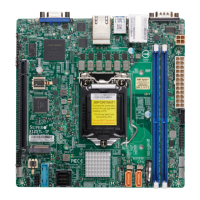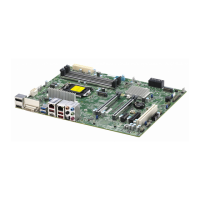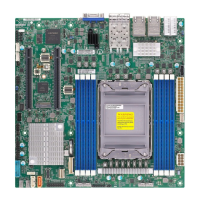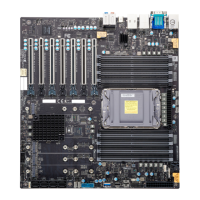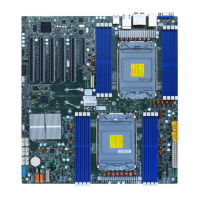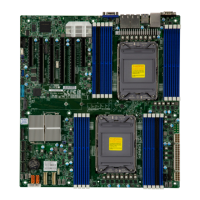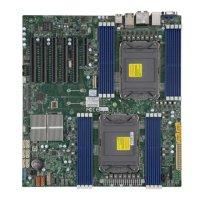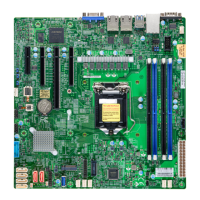
Do you have a question about the Supermicro X12STL-F and is the answer not in the manual?
| Form Factor | ATX |
|---|---|
| Socket Type | LGA 1200 |
| Memory Slots | 4 |
| Maximum Memory | 128 GB |
| RAID Support | RAID 0, 1, 5, 10 |
| Memory Type | DDR4 |
| Storage | 6 x SATA3 |
| Networking | 2 x 1GbE LAN |
| USB Ports (Rear) | 2 x USB 2.0 |
| USB Ports (Front) | 2 x USB 3.2 Gen1 ports, 2 x USB 2.0 ports |
| IPMI | Yes |
| Video Outputs | HDMI, DisplayPort |
Details the Supermicro X12STL-F motherboard's specifications and key features, including CPU, memory, and chipset.
Provides a comprehensive list of motherboard features, from CPU support to system health monitoring and dimensions.
Lists motherboard jumpers and connectors with their default settings for quick reference and identification.
Provides essential precautions and procedures for handling static-sensitive components to prevent damage during installation.
Step-by-step guide for correctly installing the CPU and heatsink on the motherboard, including important warnings.
Explains memory population rules, guidelines, and detailed procedures for installing DIMM modules properly.
Details the process, required tools, and precautions for physically installing the motherboard into a computer chassis.
Identifies and defines the various ports on the rear I/O panel and front panel header pins.
Details the pin definitions for ATX power connectors, 8-pin CPU power, and 4-pin fan headers.
Explains jumper operation and describes key jumpers like CMOS Clear and Watchdog Timer.
Offers systematic steps to diagnose and resolve common system issues such as no power, no video, or boot failures.
Guides users through troubleshooting boot failures, memory errors, and system instability problems.
Outlines steps before contacting support and provides answers to frequently asked questions.
Details the Main and Advanced BIOS setup screens, covering system information and general configurations.
Explains settings related to CPU features, performance tuning, and memory configurations like speed and ECC.
Describes settings for boot mode, boot order, and managing boot devices for system startup.
Provides detailed instructions for recovering the UEFI BIOS using a USB flash drive in case of corruption.
